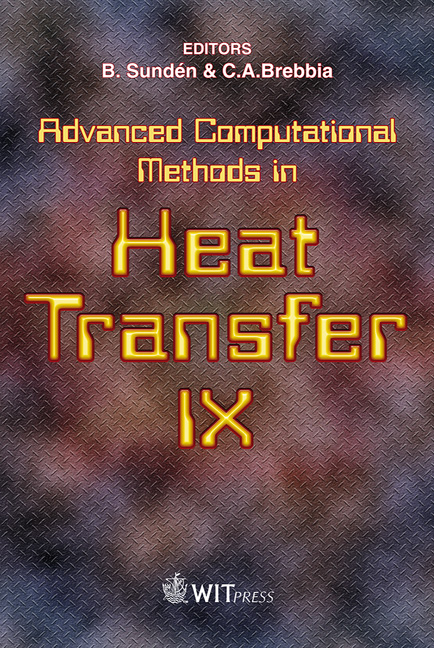Conservative Averaging As An Approximate Method For Solution Of Some Direct And Inverse Heat Transfer Problems
Price
Free (open access)
Transaction
Volume
53
Pages
10
Published
2006
Size
283 kb
Paper DOI
10.2495/HT060311
Copyright
WIT Press
Author(s)
A. Buikis
Abstract
The conservative averaging method was developed as an approximate analytical and/or numerical method for solving partial differential equation or its system with piece-wise constant (continuous) coefficients. The usage of this approximate method for separate relatively thin sub-domain or/and for subdomain with al large heat conduction coefficient leads to a reduction of domain in which the solution must be found. To apply this method for all sub-domains of layered media, a special type of spline was constructed: the integral averaged values interpolating parabolic spline. The usage of this spline allows diminishing the dimensions of initial problem per one. It is important that in all cases the original problem with discontinuous coefficients from Rn+1 transforms to problem with continuous coefficients in Rn. A method of conservative averaging for ill-posed inverse problems in some cases allows transforming them to wellposed inverse problems. Keywords: heat transfer, piecewise constant (continuous) coefficients, conservative averaging, non-classical conditions, integral spline, mesh (dimension) reduction, direct problem, inverse problem. 1 Introduction By modeling practically interesting processes, e.g. heat transfer processes in non-homogeneous media, very often we need to consider the situation, when the medium has an organized structure, i.e. it is not fully chaotic. For example it often has a layered structure. In addition some of these layers are relatively thin in comparison with adjacent layers and have strongly different physical properties.
Keywords
heat transfer, piecewise constant (continuous) coefficients,conservative averaging, non-classical conditions, integral spline, mesh(dimension) reduction, direct problem, inverse problem.





